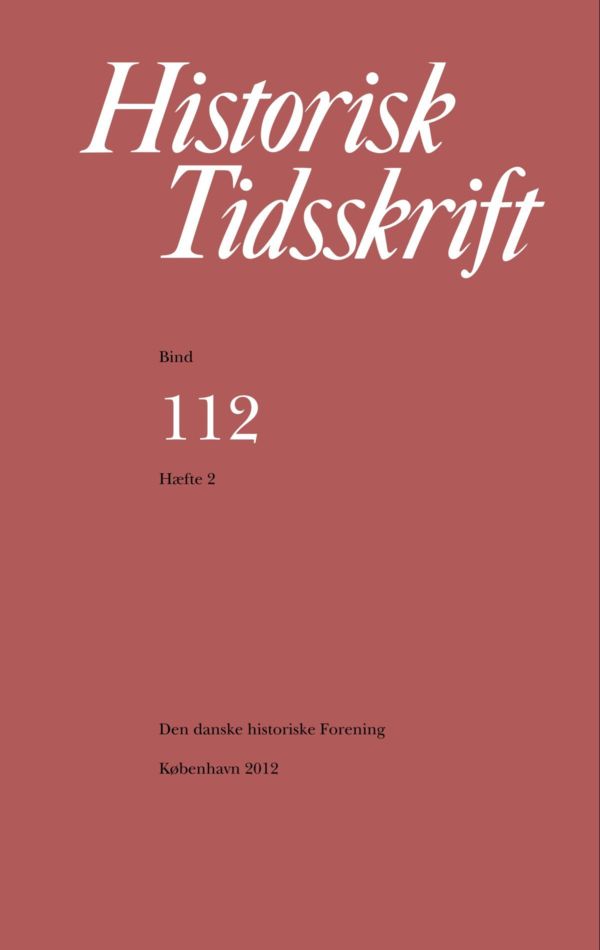Danske kommuner 1838-2012. Historisk-geografisk analyse af den danske kommunestruktur fra oprettelsen til i dag
Resumé
Danish Municipalities 1838-2012 An Historico-Geographic Analysis of the Danish Municipal Structure from its Establishment until TodayThe division of Denmark into municipalities took place in the first half of the nineteenth century. For the Kingdom proper, the procedure was finalized in 1842, while in the duchies – present-day South Jutland and Schleswig-Holstein – things remained unsettled until 1867, i.e. after the establishment of Prussian rule following the Second Schleswig War 1864. Since then, municipalities have undergone several fundamental changes in terms of statutes, assignments, and sizes and boundaries. The present article focuses on the latter aspect, mapping out the spatial variations induced by successive administrative reforms. The most significant shift occurred in the nineteen sixties. Before 1960, size and demarcations were, by and large, determined by history – municipal boundaries and the limits between town and country built on far older structures. Even gradual modifications were few and insignificant over the period 1842-1960. Some new municipalities were indeed formed and some older ones split in two, primarily in moorland tracts now being subject to intensified cultivation and demographic expansion. Likewise, the area of many towns and boroughs was enlarged around the turn of the century and later. Nevertheless, fundamental change was confined to Northern Schleswig, reunited with Denmark in 1920. In the nineteen sixties, politicians considered the smallness of municipal units an obstacle to the improvement of local public service, and there was a desire to have the distinction between rural and urban units removed. From then on until today, standardization, concentration of authority in larger units, increased parliamentary intervention and state regulation of municipal affairs have been main tendencies, institutionalized through major administrative reforms in 1970 and 2007. The development in municipal geography, then, was far from smooth or linear, measured along the axis of time, and change was not evenly distributed across the country. Societal dynamics on several levels must be taken into consideration in order to understand what happened and why. First, a series of overriding trends in demography, national economy and welfare provision made its influence felt. Regional differences within the older municipal structure are roughly explained by major demographic differences, with sparsely populated moorland tracts in Jutland, more densely populated agrarian districts across the country, and the ever-larger concentrations of people in towns and cities as the three ideal types. Population growth, particularly in low-density areas, also explains most cases of altogether new municipalities until the middle of the twentieth century. The enlargement of provincial boroughs from the end of the eighteen nineties was a product of continued industrialization, beginning in the eighteen seventies, and of general urban growth. The merger of municipal units over recent decades are explained by a politically motivated desire on the one hand to erect a bigger, more encompassing welfare sector manned by professionals, and on the other hand to run it more efficiently, benefiting from economies of scale. Displacement of the economic weight of different regions within the national framework was in more than one period an important factor; for instance, the fast-track growth in the former moorlands and the more recent divide between growth centres and peripheral areas have both played a major role in determining the size of municipalities. Secondly, local peculiarities and vested interests must be taken into account. When focusing on any individual unit, general tendencies explain a lot, but surprisingly often one or more deviations from the mainstream development occur. Unique economic, cultural and political factors can all exercise considerable influence and contribute to the overall outcome in a way that counterbalances uniformity. A third important level of explanation is the central state apparatus and its resolve and opportunity to carry out its plans and programmes. The clearest illustration of this nexus is perhaps the significant differences in municipal structure between South Jutland, formerly part of the duchies, and the remainder of Denmark, i.e. the pre-1920 Kingdom. The overall structural reforms of 1970 and 2007 are other good examples of the importance of the influence of the state on municipal structure. Even though the municipalities that were involved drew up the new local boundaries, the results must comply with guidelines issued by the Danish Parliament. Reforms were designed on the upper level, but carried out in practice at the bottom of the administrative hierarchy, by municipality officials. Having said this, it is worthy of note that mergers would have taken place regardless of state initiative. The intervention from the top was very direct, but the role of the state was rather to channel and enhance a wave that had already been set in motion than to initiate the process from scratch. Mergers were a topic of discussion from early on and a few were already carried out before the reforms of 1970 and 2007. On the other hand, the presence of centrally decreed targets and procedures meant that mergers happened in most places, spread all over the country and according to common guidelines. Local requests were taken under consideration, but might be ignored if they differed from the targets stipulated by the central authorities.Downloads
Publiceret
Citation/Eksport
Nummer
Sektion
Licens
Ophavsret til bidrag i Historisk Tidsskrift tilhører forfatterne og Den danske historiske Forening som udgiver af Historisk Tidsskrift. For illustrationer gælder den ophavsret, som står anført i billedteksten. Ophavsretslovens almindelige bestemmelser gælder, hvilket vil sige, at ophavsretten gælder i 70 år efter forfatterens død. Bidrag i Historisk Tidsskrift må derfor, med forbehold for en ”moving wall” på tre år, frit downloades, læses, gemmes, anvendes og citeres (med kildeangivelse) i privat og videnskabelig sammenhæng, men de må ikke helt eller delvis genudgives af tredjepart, heller ikke i redigeret form, uden tilladelse fra forfatterne og Den danske historiske Forening. Henvendelse skal i så fald rettes til Historisk Tidsskrifts redaktion på histtid@hum.ku.dk.





